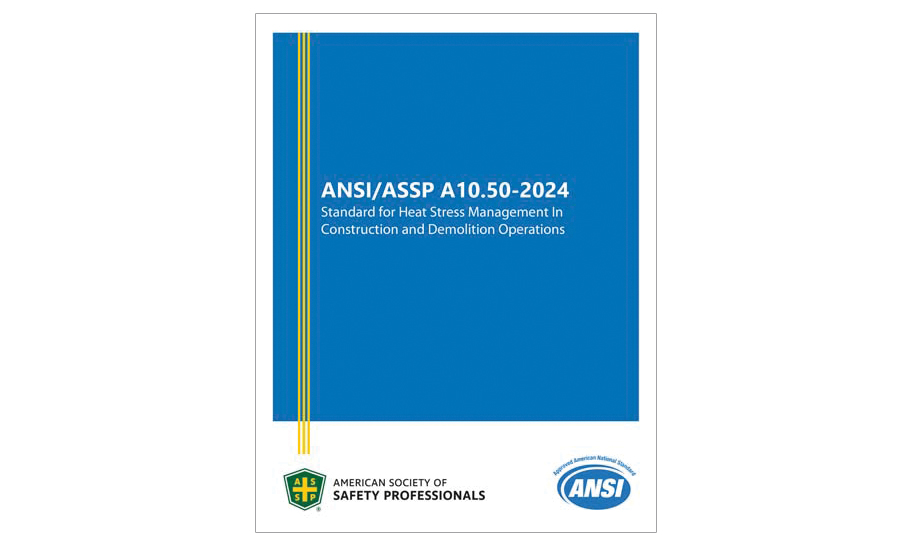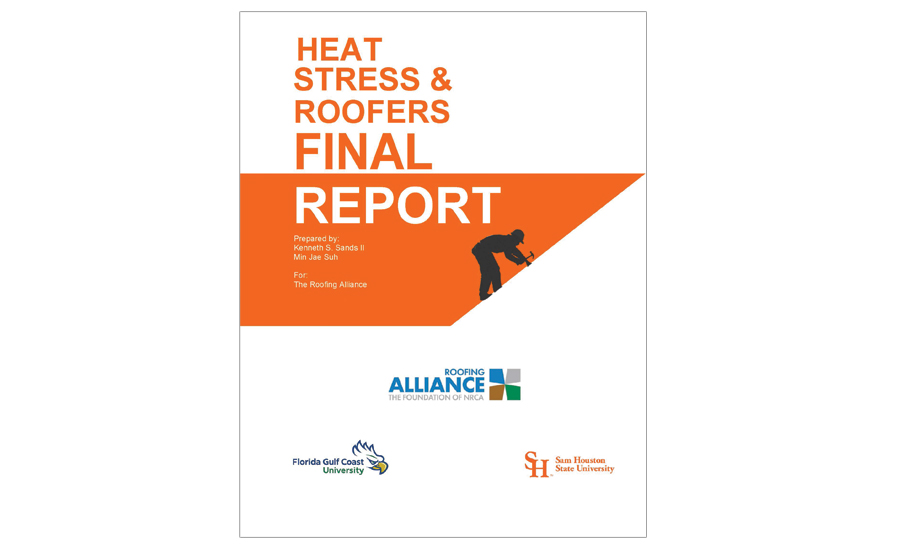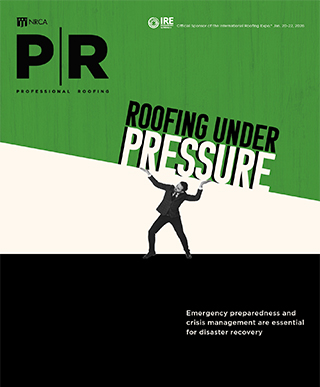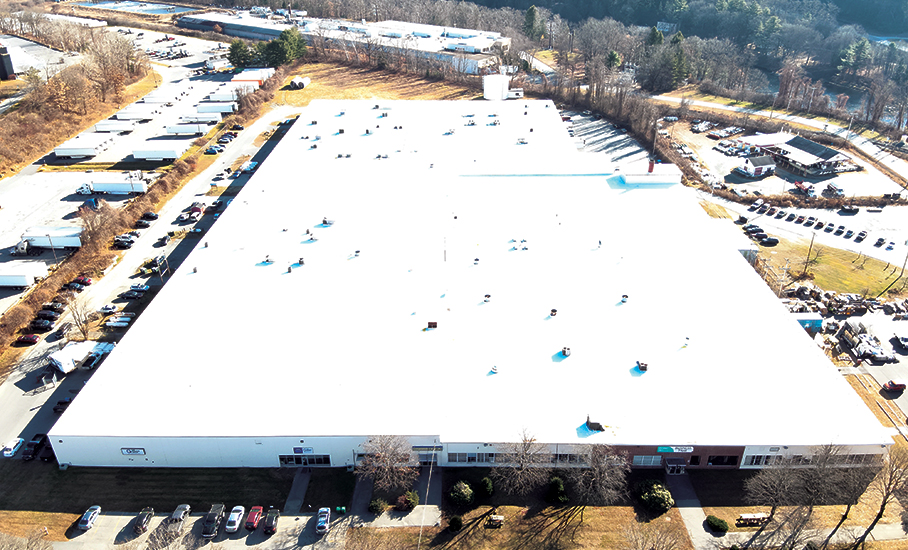
As spring spreads to northern parts of the U.S., more roofing workers are returning to rooftops. During the next 10 years, roofing jobs are expected to grow 6% faster than the average rate for all occupations, according to the Bureau of Labor Statistics. This expected growth projects an additional 13,600 roofing workers will be needed each year—many of these positions replacing retiring workers. Without much experience working in hot, outside environments, new roofing workers are particularly vulnerable to heat stress.
The importance of heat-related illness prevention in the workplace to protect new and experienced roofing workers cannot be overstated. If you oversee a crew, it’s important to know how to prevent heat-related illness.
Prevention and preparedness
According to the U.S. Global Change Research Program, heat wave frequency increased from an average of two per year in the 1960s to more than six per year in the 2020s with an average heat wave season lasting 49 days longer.
In 2019, a key finding in research funded by the CPWR-The Center for Construction Research and Training showed construction workers composed of 6% of the total workforce but accounted for 36% of occupational heat-related deaths from 1992-2016. Compared with all construction workers, roofing workers were 6.93 times more likely to experience heat-related death.
A recent 2024 CPWR report regarding heat stress during summer construction work supports the 2019 findings. Notable results showed workers arrived to a job site dehydrated, and roofing workers have higher peak core body temperatures during the workday.

Spring is the perfect time to review and update your company’s heat-safety plans and prepare roofing workers for the coming hot summer months. When it comes to heat stress, prevention is key, and taking steps to prepare work crews should begin long before summer is in the air.
Roofing work is a physically demanding job, requiring a level of fitness, endurance and experience developed over time. Roofing workers are construction athletes who carry heavy loads across uneven surfaces. Your heat-related illness prevention playbook doesn’t need to be fancy to be effective.
First, examine how you do your work. Are there opportunities to shift intense work to cooler parts of the day or rotate tasks among workers? Consider how workers are dressed. Do you shift to lighter-colored, loose-fitting, breathable clothing in the summer? Is it common for workers to wear hats, neck shades or use sunblock in the summer months?
ANSI/ASSP A10.50
As the Occupational Safety and Health Administration moves forward with a federal standard, the American National Standards Institute, A10 committee developed ANSI/ASSP A10.50, “Heat Stress Management in Construction and Demolition Operations,” the first voluntary consensus standard addressing heat. The standard assists users in recognizing signs and symptoms of heat-related disorders in indoor and outdoor work environments; provides methods and strategies for reducing or eliminating workers’ emergent heat-related disorders at construction worksites; and provides planning help to establish training content for workers and supervisors related to heat stress and heat-related disorders.
NRCA’s risk management staff, along with other safety professionals, participated in the development of this voluntary heat standard published in February 2024, available at webstore.ansi.org, to serve as a guide to prevent heat-related illnesses and injuries in the roofing industry and across construction.

Training and education
Next, be sure crews are knowledgeable about and know how to prevent heat-related illnesses. Training and education should include recognizing signs and symptoms and how to respond in an emergency, leading to better choices made on high-heat days.
A lot of heat-related illness prevention happens outside of work. Employees should know their personal health risks related to heat exposure. From pre-existing medical conditions to side effects of medications, each person is unique in how he or she will respond to heat. There is a lot a person can do before a heat wave begins to help prevent heat-related illnesses during a high-heat day. Three simple but significant precautions remain fundamental:
- Hydration. Hydration starts long before a high-heat day at work. Hydrating should start at least one day (24 hours) before a heat event begins and is a conscious effort on the part of the individual. For an intense work shift when high heat is expected, workers should begin hydrating 48 hours before the start of the shift to prep for success. This means actively drinking fluids consistently throughout the days leading up to the high-heat event. Alcohol, sugary drinks and caffeinated products like coffee all work to dehydrate your body and should be avoided.
- Rest breaks. Frequent breaks help lower body temperature, which can prevent heat-stress events. Taking breaks can help maintain productivity by preventing heat-induced fatigue. Benefits increase when breaks are in cool, shaded areas. The core body temperature of an outdoor worker can lower in as little as eight minutes when taking a break in a cool, shaded area. Additionally, these breaks can serve as good check-ins on team hydration and overall wellness.
- Acclimatization. For new and returning workers, acclimatization is simply the process of getting used to the strain of work during the stress of heat. In this case, acclimatization is a gradual increase in the length and intensity of the work over a span of one to two weeks to get used to the overall load on the body. The roofing athlete is much like any other athlete—it takes time to condition the body to deal with the demands of the work and achieve peak performance.

Regulatory timeline
To maintain an up-to-date playbook, be familiar with regulatory requirements and stay abreast of requirements that can change.
In 2021, the Occupational Safety and Health Administration published an Advanced Notice of Proposed Rulemaking for Heat Injury and Illness Prevention in Outdoor and Indoor Work Settings that applies to all workplaces. This document asked more than 100 questions seeking input regarding numerous aspects of heat- related illness prevention.
NRCA submitted independent comments to OSHA in response to the notice as well as signed onto comments submitted by the Construction Industry Safety Coalition, which is composed of construction trade associations.
In April 2022, OSHA launched an enforcement National Emphasis Program for Outdoor and Indoor Heat-Related Hazards that applies to outdoor and indoor workplaces in construction and general industry. The National Emphasis Program is set to expire in April 2025, three years following its issuance, unless OSHA extends the term.
On Aug. 25, 2023, OSHA proceeded with the Small Business Regulatory Enforcement Fairness Act phase of the proposed rulemaking that concluded Nov. 3, 2023. NRCA members Rod Petrick, president of Ridgeworth Roofing Co. Inc., Frankfort, Ill., and John Fleming, president of Weathercraft Co. of Colorado Springs, Fountain, Colo., participated in this phase as small entity representatives and took part in Small Business Advocacy Review panel interviews, helping ensure the roofing industry had a meaningful voice in the rulemaking process.
Thanks to NRCA member participation, many recommendations from small entity representatives were included in the Small Business Advocacy Review panel report submitted to OSHA. By sharing their perspectives in panel interviews, these NRCA member companies successfully shifted heat triggers to a more reasonable level, helping the panel understand the need for as-needed rest breaks, rather than rigidly timed rest breaks, and getting the proposed rule focused toward employee training.
On Aug. 30, 2024, following the Small Business Regulatory Enforcement Fairness Act review, OSHA published a Notice of Proposed Rulemaking in the Federal Register giving the industry the first glimpse of the proposed heat standard.
OSHA solicited feedback from stakeholders through a 120-day public comment period with a deadline of Dec. 30, 2024. Because of the complexity of the standard, NRCA and many others requested a comment period extension. OSHA granted a 14-day extension with the comment deadline moved to Jan. 14, 2025.
One size does not fit all
The text of the proposed regulation is only 20 pages, but the Notice of Proposed Rulemaking contains 376 pages of detail and background information. The proposed standard is an attempt at a “one-size-fits-all” heat-related illness prevention solution for indoor and outdoor workers that would apply in all general industry, construction, maritime and agriculture sectors where OSHA has jurisdiction.
Following are the main requirements for a heat-related illness and injury prevention plan contained in the Notice of Proposed Rulemaking:
- Heat safety coordinators
- Heat monitoring
- Initial and high-heat triggers
- Record keeping
- Paid rest breaks
- Supply of large amounts of water
- Shaded break areas
- Acclimatization
- Comprehensive training for workers and supervisors.
NRCA recognizes heat as a serious workplace hazard affecting roofing workers and continues to pursue improved worker health and safety through advocating for a workable, practical standard that will achieve the goal of reducing the effects of heat illness and injuries in the roofing industry.
But the proposed standard contains areas of concern and opportunities for improvement and is highly prescriptive and overly burdensome to employers in its current form. For example, employers are required to make available 1 quart of water per employee per hour. The potential confusion to provide this quantity of water versus consumption of this quantity of water can lead to drinking too much water for some people, risking a potentially dangerous illness called hypernatremia. NRCA is urging OSHA to further clarify this in the proposed standard.
Another area of concern is failure to account for or recognize the potential role of poor air quality from sources such as wildfires in heat-related illness numbers as heat-related illness cases can increase by as much as four times on a bad air quality day.
NRCA proposed positions
NRCA will continue to advocate for a flexible standard that does not replace one hazard with another and holds the following positions:
- The scope of the proposed rule does not account for the complexity of issues associated with the construction industry. There are significant differences in workers’ job tasks and environmental conditions. The construction environment is inherently fluid. NRCA has significant concerns with any regulatory approach that fails to take this into account but instead imposes prescriptive, complicated requirements on construction industry employers. OSHA’s estimates of the amount of time needed for many employers to comply with this regulation is grossly underestimated.
- The proposed rule contains different requirements for indoor and outdoor work environments, which will create confusion and compliance difficulties for employers whose employees must work in both environments throughout the workday.
- Heat metrics used for monitoring should be easy to understand. Whether heat index or ambient temperature, employers need readily available and easily understandable options for heat measurement.
- NRCA believes caution should be exercised when attempting to regulate general health hazards not unique to the workplace. For example, as previously discussed, hydration starts days before a heat event. Consequently, someone’s personal activities outside of work can be a large factor in a heat-related illness event.
- Heat injury and illness-prevention program requirements are overly prescriptive and should be simplified and allow for recognition of an employer’s good faith efforts to comply. Employers also should be able to keep their current, effective heat-related illness prevention programs.
- Mandatory frequency of rest breaks, prescriptive emergency response requirements, excessive record-keeping requirements and environmental monitoring are overly prescriptive and burdensome to employers.
- Although OSHA made some progress in adjusting the initial and high-heat triggers, they still are too low and do not account for geographical differences across the U.S.
- The high-heat trigger’s mandatory rest break frequency (every two hours) could expose employees to additional dangers and affect certain job site tasks.
- Acclimatization requirements are not workable as currently outlined in the Notice of Proposed Rulemaking.
- The length of the compliance timeline should make economic sense by allowing contractors to work through back-log rather than forcing them to absorb additional implementation costs.
Heat stress for roofers training course
The Roofing Alliance, in partnership with Florida Gulf Coast University, Fort Meyers, created the Heat Stress & Roofers Final Report, which serves as the basis for heat-related illness prevention training. The modules provide important industry heat-stress data and its effects on roofing workers, including how to prevent heat-related illness, contributing risk factors, policies and regulations surrounding heat stress, and a guide for developing a workplace heat-related illness plan. The report is available at shop.nrca.net.

NRCA is available to help
NRCA is available to provide resources and training regarding heat safety and other safety-related topics.
For more information about preventing heat-related illnesses, visit NRCA’s Health and Safety webpage at nrca.net/safety.
Members are encouraged to take advantage of NRCA’s resources, including Toolbox Talks available at no charge for members ($195 for nonmembers) for additional resources to educate workers.

Adrianne Anglin, CSP
Director of safety and risk management
NRCA


